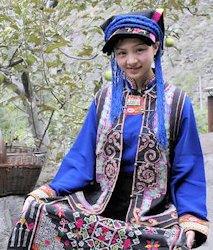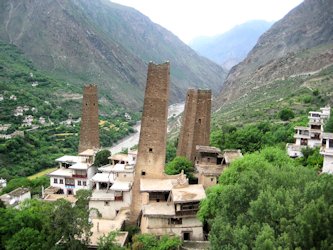|
39. Chinese Nationalities (Qiang Minority) -- Minorities by Alphabetic Sequence |
||

|

|

|
| Qiang Ladies | Qiang Guairu Festivel | Qiang Watch Towers |
|
The Qiang ethnic group is one of the oldest tribes in China. The Qiang ethnic group mostly inhabits hilly to mountainous areas of the Maowen County in the Aba Tibetan Qiang Autonomous Prefecture in western Sichuan Province. They have a population of 198,300; a small number lives with the Tibetan, Han and Hui ethnic groups in the Wenchan, Li, Songpan, Heishui counties and Danba area in Ganzi Tibetan Autonomous Prefecture. "Qiang" was a name given by ancient Hans to the nomadic people in west China. The ancient Qiangs were not a single distinctive ethnic group. According to historical records, a clan group made their homes in what are today's Sichuan, Gansu and Qinghai provinces. The Qiang people call themselves Erma. Some inscriptions on tortoise shells, dating back 3,000 years ago, show that the ancestors of the Qiang people were already very active in the northwest and central plains of China during the Shang Dynasty (16-11 BC). At the end of the 4th century BC, some of the Qiangs began to move southwest and northwest. Some of them migrated to districts near the Dadu, Anning and the upper reaches of the Minjiang River while some have settled in the Qinghai-Tibetan Plateau. The Qiangs have their own spoken language but use the Han characters for their written language. The Qiangs are engaged in animal husbandry. As early as the Spring and Autumn Period (770-476 B.C.) they migrated from northwest China to Sichuan and then began to engage in agricultural production. They have an ancient culture. They believe in polytheism and worship ancestors. They are closely related to the Tibetans. Their religions are polytheism, nature worship, shamanism but not lama Buddhism. They are part of the Sino-Tibetan Tibeto-Burman ethno linguistic group. |
||
| Return to Alphabetic List On to No. 40 Minority Russian ⇨ | ||